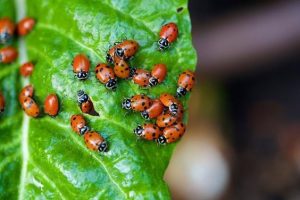Ladybugs, with their vibrant red and black colors, are not only charming garden visitors but also incredibly beneficial insects. These tiny beetles are voracious predators of aphids, mealybugs, and other garden pests, making them a valuable asset to any gardener looking for natural pest control solutions. If you want to welcome these little helpers into your garden and ensure they stick around, read on to discover how to attract thousands of ladybugs and create a welcoming habitat for them.

1. Plant a Variety of Ladybug-Friendly Flowers: Ladybugs are not just attracted to pests; they also need nectar and pollen for food. To entice them to your garden, plant a variety of flowers that ladybugs love, such as marigolds, daisies, sunflowers, and yarrow. These flowers provide a steady source of nectar and pollen, ensuring ladybugs have a reason to stay.
2. Install Ladybug Attractors: Ladybug attractors are specially designed habitats that mimic the natural environment ladybugs prefer. You can purchase ladybug houses or make your own by stacking wooden slats or using hollowed-out bamboo. Place these attractors near your ladybug-friendly flowers to provide them with shelter and a place to lay their eggs.
3. Reduce Pesticide Use: Using chemical pesticides can harm ladybugs and other beneficial insects, so opt for organic pest control methods whenever possible. By reducing pesticide use, you create a safer environment for ladybugs to thrive.
4. Avoid Excessive Mulching: While mulch can be beneficial for your garden, it can also be a barrier for ladybugs, preventing them from reaching the soil where they lay their eggs. Use mulch sparingly or consider leaving some areas of bare soil in your garden to accommodate their needs.
5. Introduce Ladybugs to Your Garden: If you want to give your ladybug population a head start, you can purchase ladybugs from garden supply stores and release them into your garden. Be sure to release them near the ladybug attractors and areas with pest problems.









